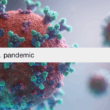
When it comes to cancer, knowledge is power. And when it comes to rectal cancer, understanding the survival rate can provide valuable insights for patients, their families, and healthcare professionals. In this comprehensive guide, we will delve into the truth behind the survival rate of rectal cancer, debunking common myths and shedding light on the latest research and treatment advancements.
From the initial diagnosis to the latest treatment options, we will explore the factors influencing survival rates and delve into the importance of early detection and timely intervention. Whether you are a patient seeking clarity or a healthcare professional looking to stay up-to-date, this guide will empower you with the knowledge you need to navigate the complexities of rectal cancer confidently. So, join us as we peel back the layers of misinformation and uncover the truth about rectal cancer survival rates.
Understanding the Survival Rate of Rectal Cancer
Rectal cancer is a type of cancer that affects the last several inches of the large intestine. It is a serious condition that can significantly impact a patient’s health and well-being. Understanding the survival rate of rectal cancer is crucial for patients and their loved ones, as it provides insight into the prognosis and potential outcomes of the disease.
The survival rate of rectal cancer measures how many people diagnosed with the disease are still alive after a certain period of time. It is usually expressed as a percentage and can vary depending on several factors, such as the cancer stage at the time of diagnosis, the patient’s overall health, and the type of treatment received.
The survival rate of rectal cancer has improved significantly over the years thanks to advancements in screening, early detection, and treatment options. However, it is important to note that survival rates are estimates based on large groups of people and may not accurately predict an individual’s prognosis. Every patient’s journey with rectal cancer is unique, and factors such as age, overall health, and response to treatment can greatly influence survival outcomes.
Factors Affecting the Survival Rate of Rectal Cancer
Several factors can affect the survival rate of rectal cancer. Understanding these factors can provide valuable insights into the prognosis and potential outcomes of the disease. Here are some of the key factors that influence survival rates:
1. Stage of cancer: The stage of rectal cancer at the time of diagnosis is one of the most important factors that affect survival rates. The stage determines the extent to which the cancer has spread and helps healthcare professionals develop an appropriate treatment plan. Generally, the earlier the stage at diagnosis, the higher the survival rate.
2. Tumor size and location: The size and location of the tumor can also impact survival rates. Larger tumors and tumors located closer to the rectum’s edge may be more difficult to treat and have a lower survival rate.
3. Lymph node involvement: Cancer cells in the lymph nodes near the rectum are associated with a higher risk of recurrence and a lower survival rate. Lymph node involvement is often determined through imaging tests or surgery.
4. Metastasis: The presence of metastasis, which occurs when cancer cells spread to other body parts, is a significant factor in determining survival rates. Rectal cancer that has spread to distant organs, such as the liver or lungs, is more challenging to treat and has a lower survival rate.
5. Age and overall health: Age and health can also influence survival rates. Younger patients and those in good overall health tend to have better outcomes than older or less healthy individuals.
6. Response to treatment: The effectiveness of the chosen treatment plan and the patient’s response to treatment can greatly impact survival rates. Some patients may respond completely to treatment, while others may experience a partial or no response.
It is important to remember that these factors are not definitive predictors of survival outcomes. Each patient’s situation is unique, and the best way to assess prognosis is through open communication with healthcare professionals.
Statistics and Trends for Survival Rate of Rectal Cancer
To truly understand the survival rate of rectal cancer, it is essential to examine the statistics and trends associated with the disease. These numbers provide a broader perspective and help identify patterns and areas for improvement in diagnosis and treatment. Here are some key statistics and trends related to rectal cancer:
1. Incidence and prevalence: Rectal cancer is the fourth most common cancer in the United States, with approximately 40,000 new cases diagnosed yearly. Rectal cancer incidence has declined in recent years due to increased awareness, early detection, and improved treatment options.
2. Survival rates: Rectal cancer’s five-year survival rate is around 65%. However, survival rates can vary significantly depending on the cancer stage at diagnosis. For localized rectal cancer, the five-year survival rate is around 90%, while for distant metastatic disease, the rate drops to around 15%.
3. Screening and early detection: Regular screening is crucial in detecting rectal cancer early when treatment is more effective. The most common screening method for rectal cancer is a colonoscopy, which allows for detecting and removing precancerous polyps before they develop into cancer.
4. Treatment advancements: Treatment options have improved survival rates for rectal cancer patients. These advancements include minimally invasive surgical techniques, targeted therapies, and the introduction of neoadjuvant therapy, which involves chemotherapy and radiation treatment before surgery to shrink tumors and increase the chances of successful removal.
By analyzing these statistics and trends, healthcare professionals can identify areas where interventions and improvements can be made to enhance survival rates and patient outcomes further.
Early Detection and Diagnosis of Rectal Cancer
Early detection and timely diagnosis play a crucial role in improving the survival rate of rectal cancer. Detecting the disease early allows for more effective treatment options and better chances of successful outcomes. Here are some key aspects of early detection and diagnosis:
1. Screening guidelines: Regular screening is recommended for individuals at average risk for rectal cancer, usually starting at age 50. However, individuals with a family history of colorectal cancer or certain genetic conditions may need to start screening earlier. Screening methods include colonoscopy, flexible sigmoidoscopy, and stool tests.
2. Recognizing symptoms: It is important to be aware of the common signs and symptoms of rectal cancer, which can include changes in bowel habits, blood in the stool, abdominal pain, and unexplained weight loss. If any of these symptoms persist, it is essential to seek medical attention promptly.
3. Diagnostic tests: If rectal cancer is suspected, healthcare professionals may recommend further diagnostic tests, such as imaging scans (CT, MRI), endoscopic procedures (sigmoidoscopy, colonoscopy), or biopsy. These tests help determine the stage and extent of the cancer, guiding treatment decisions.
Early detection improves survival rates, allowing timely intervention and appropriate treatment strategies. Regular screening, awareness of symptoms, and proactive communication with healthcare professionals are essential in the early detection and diagnosis of rectal cancer.
Treatment Options for Rectal Cancer
Treatment options for rectal cancer are diverse and constantly evolving, aiming to achieve the best possible patient outcomes. The choice of treatment depends on several factors, including the stage of the cancer, the patient’s overall health, and individual preferences. Here are some common treatment options for rectal cancer:
1. Surgery: Surgery is often the primary treatment for rectal cancer. The type of surgery performed depends on the stage and location of the cancer. Procedures may include local excision, transanal endoscopic microsurgery, or more extensive surgeries such as low anterior resection or abdominoperineal resection.
2. Chemotherapy: Chemotherapy may be used before surgery (neoadjuvant chemotherapy) to shrink tumors and increase the chances of successful removal. It can also be used after surgery (adjuvant chemotherapy) to kill any remaining cancer cells and reduce the risk of recurrence.
3. Radiation therapy uses high-energy beams to kill cancer cells or shrink tumors. It can be delivered externally (external beam radiation therapy) or internally (brachytherapy). Radiation therapy may be used alone or in combination with surgery and chemotherapy.
4. Targeted therapy: Targeted therapies specifically target certain molecules or pathways in cancer growth, limiting damage to healthy cells. These therapies may be used in combination with chemotherapy or radiation therapy.
5. Immunotherapy: Immunotherapy uses the body’s immune system to recognize and attack cancer cells. While immunotherapy is still being studied in treating rectal cancer, it shows promise as a potential option for patients.
The optimal treatment plan for rectal cancer often involves a multidisciplinary approach, where a team of healthcare professionals collaborates to develop an individualized treatment strategy that addresses each patient’s specific needs and goals.
Importance of a Multidisciplinary Approach in Treating Rectal Cancer
Rectal cancer is a complex disease that requires a multidisciplinary approach to ensure the best possible outcomes for patients. A multidisciplinary team typically comprises healthcare professionals from various specialties, including surgeons, medical oncologists, radiation oncologists, radiologists, pathologists, and nurses. Here are some key reasons why a multidisciplinary approach is crucial in treating rectal cancer:
1. Comprehensive evaluation: A multidisciplinary team allows for a comprehensive evaluation of each patient’s condition, considering various factors such as cancer stage, overall health, and individual preferences. This comprehensive evaluation helps determine the most appropriate treatment plan for each patient.
2. Collaborative decision-making: A multidisciplinary team promotes collaborative decision-making, where healthcare professionals from different specialties come together to discuss treatment options and develop an individualized plan. This approach ensures that all patient care aspects are considered, leading to better treatment outcomes.
3. Continuity of care: A multidisciplinary team provides continuity throughout the treatment journey. Healthcare professionals work together to monitor the patient’s progress, adjust treatment plans if necessary, and provide support and guidance at every step.
4. Access to specialized expertise: Each multidisciplinary team member brings specialized expertise to the table, ensuring that patients receive the highest quality of care. From surgical expertise to radiation therapy planning and medical oncology knowledge, the team collaborates to provide the best treatment options for each patient.
A multidisciplinary approach is essential in addressing the complex nature of rectal cancer and optimizing patient outcomes. By working together, healthcare professionals can provide comprehensive, individualized care that considers each patient’s unique needs and goals.
Lifestyle Changes and Support for Rectal Cancer Patients
A rectal cancer diagnosis can significantly impact a patient’s physical and emotional life. Alongside medical treatment, making certain lifestyle changes and seeking support can help patients cope with their challenges. Here are some important aspects to consider:
1. Healthy lifestyle choices: Maintaining a healthy lifestyle can positively impact overall well-being and treatment outcomes. This includes adopting a balanced diet, engaging in regular physical activity, getting enough rest, and avoiding tobacco and excessive alcohol consumption.
2. Emotional support: Dealing with a cancer diagnosis can be emotionally challenging. Seeking emotional support from loved ones, support groups, or mental health professionals can help patients and their families navigate the emotional aspects of the disease.
3. Managing side effects: Treatment for rectal cancer can cause various side effects, such as fatigue, nausea, and changes in bowel habits. Patients need to communicate any side effects to their healthcare team so that appropriate measures can be taken to manage them effectively.
4. Follow-up care: Regular follow-up care is essential to monitor for any signs of recurrence or complications after treatment. Healthcare professionals will guide the frequency of follow-up visits and any necessary tests or scans.
By making healthy lifestyle choices, seeking emotional support, and staying proactive in their follow-up care, rectal cancer patients can improve their overall quality of life and enhance their chances of successful recovery.
Survivor Stories and Inspiring Journeys
Survivor stories and inspiring journeys can provide hope and motivation to those affected by rectal cancer. These stories highlight the resilience and strength of individuals who have faced the disease and emerged stronger. Here are a few examples:
1. John’s story: John was diagnosed with stage III rectal cancer at 48. He underwent surgery, followed by chemotherapy and radiation therapy. Despite the challenges, John maintained a positive attitude and actively participated in support groups, which helped him cope with the emotional aspects of his journey. Today, John is cancer-free and advocates for early detection and regular screenings.
2. Sarah’s journey: During a routine colonoscopy, Sarah was diagnosed with stage II rectal cancer. She opted for neoadjuvant chemotherapy and radiation therapy before undergoing surgery. Sarah credits her strong support system and the guidance of her healthcare team for helping her navigate the complexities of treatment. Today, she actively advocates for rectal cancer awareness and encourages others to stay proactive about their health.
3. David’s triumph: David was diagnosed with stage IV rectal cancer, which had spread to his liver. He underwent extensive treatment, including surgery, chemotherapy, and targeted therapy. Despite the odds, David remained positive and focused on his recovery. Today, he is in remission and serves as an inspiration to others facing similar challenges.
These survivor stories highlight the importance of early detection, treatment advancements, and the power of a positive mindset in overcoming rectal cancer. They serve as a reminder that hope and support are available for those affected by the disease.
Frequently Asked Questions
What factors can affect the survival rate of rectal cancer?
Several factors can affect the survival rate, including the stage of the cancer at diagnosis, the patient's overall health, the patient's age, the response to treatment, and the specific characteristics of the cancer cells.
Does early detection improve the survival rate of rectal cancer?
Yes, early detection generally improves rectal cancer's prognosis and survival rate. This is because treatment is often more effective when the cancer is found early.
How does the survival rate of rectal cancer compare to other types of cancer?
Survival rates can vary widely between different types of cancer. Some cancers have higher survival rates, while others have lower rates. Rectal cancer has a relatively high survival rate when detected and treated early.
What is the survival rate for recurrent rectal cancer?
The survival rate for recurrent rectal cancer can vary widely and depends on factors such as where the cancer recurs and the patient's overall health. It's best to discuss this with a healthcare provider for the most accurate information.
How can I improve my survival rate if I have rectal cancer?
While survival rates are based on population averages and can't predict individual outcomes, maintaining a healthy lifestyle, following your treatment plan, and keeping regular follow-up appointments with your healthcare provider can help improve your overall health and, potentially, your prognosis.
Conclusion: Spreading Awareness and Promoting Early Detection
To summarize, patients, families, and healthcare professionals must understand the survival rate of rectal cancer. By dispelling common myths and highlighting the latest research and treatment advancements, individuals can confidently navigate the complexities of this disease. Many factors can impact survival rates, including cancer stage, tumor size and location, lymph node involvement, metastasis, age, overall health, and treatment response.
However, it’s essential to note that survival rates are only estimates based on large groups and might not accurately predict an individual’s prognosis. Regular screening, early detection, and timely intervention are vital in improving survival rates for rectal cancer patients. Treatment options have also advanced, providing new possibilities for managing the disease.



